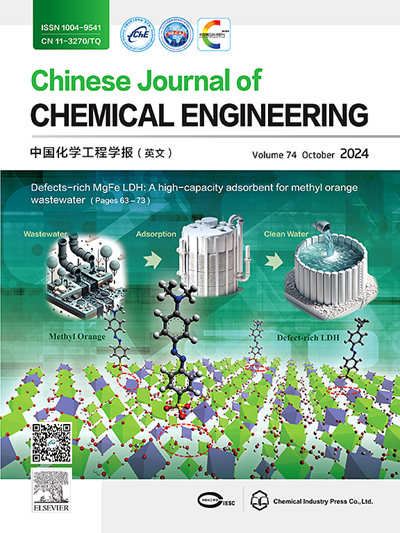Engineering hydrophilicity of graphene oxide membranes via poly(ionic liquid)s intercalation for efficient anion separation
IF 3.7
3区 工程技术
Q2 ENGINEERING, CHEMICAL
引用次数: 0
Abstract
Two dimensional (2D) membranes show huge potential for ion sieving applications owing to their regular sub-nanometer channels. How to engineer the channel micro-chemistry to pursue higher ion selectivity while maintaining promising ion transports remains challenging. In this work, we propose building rigidly confined charged 2D graphene oxide (GO) channels and manipulating their hydrophilicity via self-designed poly(ionic liquid)s (PILs) intercalation. The imidazolium cations on the PILs backbone not only stabilize the GO interlayer channels via non-covalent interactions but also create a positively charged environment for attracting anions entering into channels. The hydrophilicity variations of the side chains on the PILs help with realizing the regulation of the channel hydrophilicity. Under the electrodialysis mode, the GO membrane with the strongest hydrophobicity yields an impressive selectivity of 172.2 for Cl− and SO42−, which is 48 times of Neosepta ACS, a commercial membrane specialized for anion separation. This work offers a brand-new route in exploring high-performance ion selective membranes.
通过多离子液体嵌入氧化石墨烯膜实现高效阴离子分离的工程亲水性
二维(2D)膜由于其规则的亚纳米通道而显示出巨大的离子筛分应用潜力。如何设计通道微化学来追求更高的离子选择性,同时保持有希望的离子传输仍然是一个挑战。在这项工作中,我们提出构建刚性约束的带电二维氧化石墨烯(GO)通道,并通过自行设计的聚离子液体(pil)嵌入来操纵其亲水性。PILs主链上的咪唑离子不仅通过非共价相互作用稳定氧化石墨烯层间通道,而且还为吸引阴离子进入通道创造了一个带正电的环境。侧链亲水性的变化有助于实现通道亲水性的调控。在电渗析模式下,疏水性最强的氧化石墨烯膜对Cl -和SO42 -的选择性为172.2,是Neosepta ACS(一种专门用于阴离子分离的商业膜)的48倍。这项工作为探索高性能离子选择膜提供了一条全新的途径。
本文章由计算机程序翻译,如有差异,请以英文原文为准。
求助全文
约1分钟内获得全文
求助全文
来源期刊

Chinese Journal of Chemical Engineering
工程技术-工程:化工
CiteScore
6.60
自引率
5.30%
发文量
4309
审稿时长
31 days
期刊介绍:
The Chinese Journal of Chemical Engineering (Monthly, started in 1982) is the official journal of the Chemical Industry and Engineering Society of China and published by the Chemical Industry Press Co. Ltd. The aim of the journal is to develop the international exchange of scientific and technical information in the field of chemical engineering. It publishes original research papers that cover the major advancements and achievements in chemical engineering in China as well as some articles from overseas contributors.
The topics of journal include chemical engineering, chemical technology, biochemical engineering, energy and environmental engineering and other relevant fields. Papers are published on the basis of their relevance to theoretical research, practical application or potential uses in the industry as Research Papers, Communications, Reviews and Perspectives. Prominent domestic and overseas chemical experts and scholars have been invited to form an International Advisory Board and the Editorial Committee. It enjoys recognition among Chinese academia and industry as a reliable source of information of what is going on in chemical engineering research, both domestic and abroad.
 求助内容:
求助内容: 应助结果提醒方式:
应助结果提醒方式:


